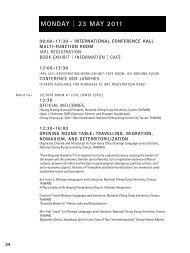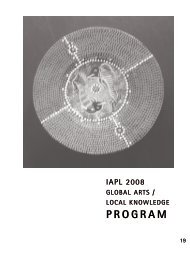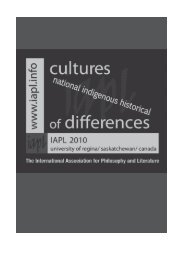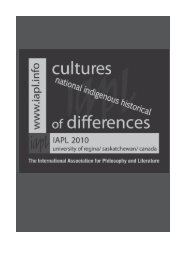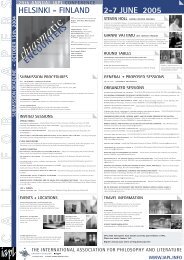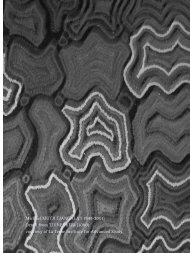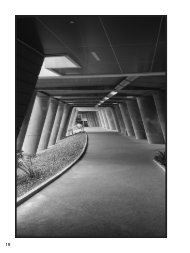IAPL2012-CB-0531-052.. - The International Association for ...
IAPL2012-CB-0531-052.. - The International Association for ...
IAPL2012-CB-0531-052.. - The International Association for ...
Create successful ePaper yourself
Turn your PDF publications into a flip-book with our unique Google optimized e-Paper software.
ENERGY, TIMBRE, AND VECTORIAL COMPOSITION IN THE<br />
WORK OF ERKKI-SVEN TÜÜR<br />
AN ESSAY BY KERRI KOTTA<br />
It is a striking fact that works by contemporary Estonian composer Erkki-Sven Tüür are<br />
often per<strong>for</strong>med in regular symphony concerts together with works by Western classical<br />
composers and are not confined to specialized events such as “new music festivals..”<br />
In part, this fact surely testifies to the popularity of Tüür’s music. However, unlike the<br />
idiom of Arvo Pärt, another famous Estonian composer, Tüür’s musical language cannot<br />
be characterized as particularly “listener-friendly,” nor can his persona be associated<br />
with a clearly defined ideological or religious agenda, which might allow a broader<br />
audience to relate to his music more easily.<br />
Despite its sophisticated modern <strong>for</strong>m, Tüür’s style in general remains quite easily<br />
accessible. Arguably, one aspect that makes this paradox possible is the composer’s<br />
original treatment of music as an experience of a kind of energy. Tüür began his<br />
musical career as leader of the progressive rock-group “In Spe.” While this fact should<br />
not be weighed unduly in considering his later development in the classical idiom,<br />
it nevertheless suggests why Tüür pays so much attention to the “energy” output of<br />
his compositional structures. Tüür’s musical structures are often complex, but their<br />
musical effect—their energy—can be grasped and enjoyed without any specialized<br />
musical education. As in rock music, the composer manipulates musical energy in order<br />
to build up the musical dramaturgy and communicate with his audience.<br />
<strong>The</strong> composer’s devotion to producing events of musical energy is also evident in his<br />
stylistic experiments of the 1990s, the decade that established Tüür as a composer of<br />
serious art music. His work of that decade shows, amid a larger search <strong>for</strong> a meta-style,<br />
a treatment of tonality and atonality as abstract models rather than as historical or<br />
stylistic phenomena. One might say that he uses tonality and atonality as “carriers”<br />
of certain type of musical energy. This conception of music in terms of the energy it<br />
might produce also explains why Tüür carefully avoids using direct stylistic quotations<br />
in works that could otherwise be characterized as polystylistic. Much more than style,<br />
it is the idea of a trans<strong>for</strong>mation of musical energy that captivates this composer. He<br />
exploits in particular constant fluctuation between tonality and atonality to generate<br />
an impression of powerful energy clashes.<br />
Tüür has decisively refrained from identifying his music with the (eclectic and<br />
historically-oriented) Neo-Romantic movement, but much of his work lies in productive<br />
dialogue with the major <strong>for</strong>mal archetypes of classical music. Two archetypal narrative<br />
trajectories are easily traced in his work: the sonata <strong>for</strong>m and the sonata cycle.<br />
70



